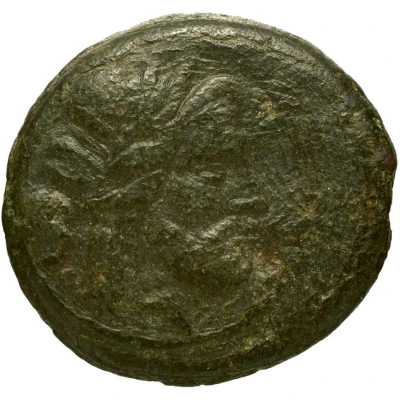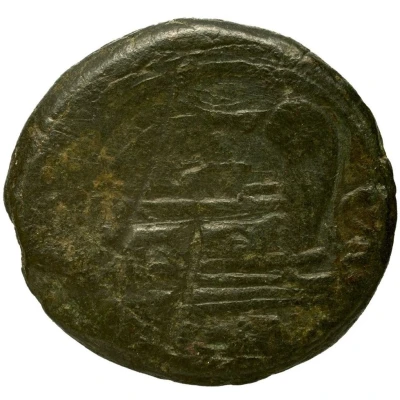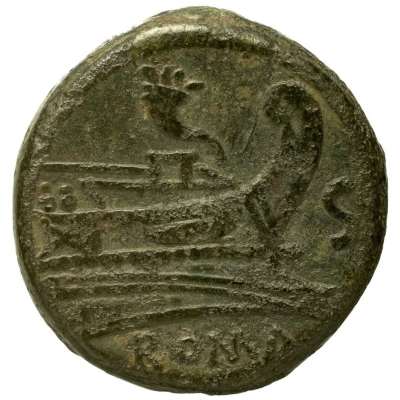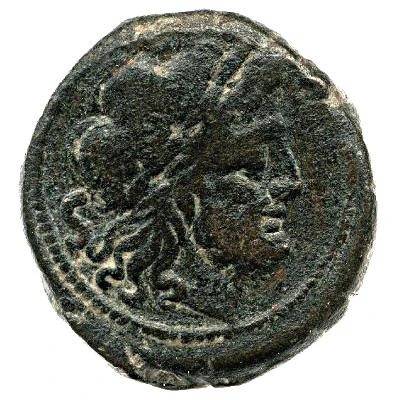
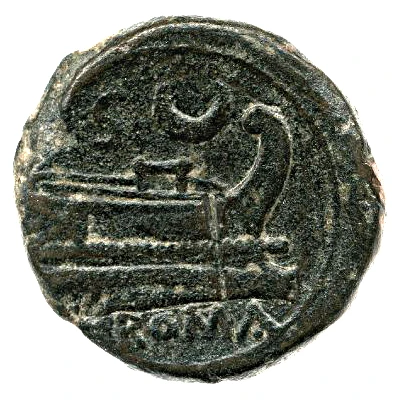

© British Museum
Semis Anonymous 207 BC
207 BC year| Bronze | 17 g | 23 mm |
| Issuer | Rome › Roman Republic (509 BC - 27 BC) |
|---|---|
| Period | Republic (509 BC - 27 BC) |
| Type | Standard circulation coin |
| Year | 207 BC |
| Value | Semis (1⁄20) |
| Currency | Denarius of 10 Asses (221 – 141 BC) |
| Composition | Bronze |
| Weight | 17 g |
| Diameter | 23 mm |
| Shape | Round (irregular) |
| Technique | Hammered |
| Orientation | Variable alignment ↺ |
| Demonetized | Yes |
| Updated | 2024-10-06 |
| Numista | N#19708 |
|---|---|
| Rarity index | 97% |
Reverse
Prow of galley right; S followed by a crescent above, ROMA below.
Script: Latin
Lettering: ROMA
Edge
Plain
Interesting fact
The Semis coin was used during a time of significant economic and political change in ancient Rome. The Roman Republic was transitioning from a primarily agricultural society to a more industrialized and commercial one, and the introduction of new coinage like the Semis helped to facilitate this change. The Semis was equivalent to half of a Roman 'denarius', which was the standard unit of currency at the time, and it featured an image of a bust of a Roman goddess on one side and a mythical creature called a 'gorgoneion' on the other. The use of bronze in the production of the Semis coin was also significant, as it marked a shift away from the earlier use of precious metals like gold and silver in Roman coinage. Overall, the Semis coin represents an interesting moment in the development of ancient Rome's economy and currency system.
